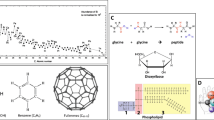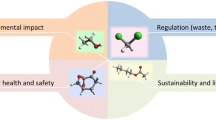Abstract
The rules of choosing names of minerals pertaining to solid solutions, including those forming reciprocal systems, are discussed. The dominant-valency rule suggested in 2008 is not sufficiently justified and cannot be recommended for use.
Similar content being viewed by others
References
H. L. Alling, Interpretatve Petrology of the Igneous Rocks (New York, 1936; Gosgeolizdat, Moscow, 1941).
A. G. Bulakh, “Chemical, Structural, and Chemical-Structural Varieties of Minerals,” Zap. Vseross. Mineral. O-va 133(5), 1–9 (2004).
A. G. Bulakh, “Isomorphism and Choice of Mineral Name” Zap. Ross. Mineral. O-va 138(3), 108–111 (2009a). [Geol. Ore Deposits, Zap. Russian Mineral. Soc. 52 (7), (2010a)].
A. G. Bulakh, “End Members, Dominant Valency, and Identification of Minerals of Mixed Composition,” Zap. Ross. Mineral. O-va 138(4), 39–44 (2009b) [Geol. Ore Deposits, Zap. Russian Mineral. Soc. 52 (7), (2010b)].
A. G. Bulakh and A. A. Zolotarev, “The Composition of Ca-Mg-Fe Clinopyroxenes C/2c and the 50% Rule,” Zap. Vseross. Mineral. O-va 130(6), 69–79 (2000).
V. V. Dolivo-Dobrovol’sky and Yu. L. Gul’bin, Physical Chemistry of Geological Processes. Methods of Physicochemical Calculation of Mineral-Forming Processes (Mining Institute, St. Petersburg, 2002) [in Russian].
F. Hatert and E. A. J. Burke, “The IMA-CNMNC Dominant-Constituent Rule and Extended,” Can. Mineral. 46(3), 717–728 (2008).
V. G. Krivovichev, “Graphic Imaging of Chemical Composition of Minerals and the 50% Rule for Defining Mineral Species,” Zap. Vseross. Mineral. O-va, 127(4), 72–78 (1998).
N. Morimoto, J. Fabries, A. K. Ferguson, et al., “Nomenclature of Pyroxenes,” Am. Mineral. 73, 1123–1133 (1988).
E. H. Nickel and J. D. Grice, “The IMA Commission on New Minerals and Mineral Names: Procedures and Guidelines on Mineral Nomenclature, 1998,” Can. Mineral. 36 913–926(1998).
“Nomenclature of the Micas: Final Report of the Mica Subcommittee of the IMA Commission on New Minerals and Mineral Names,” Zap. Vseross. Mineral. O-va, 127(5) 55–65 (1998).
Author information
Authors and Affiliations
Additional information
Original Russian Text © V.V. Dolivo-Dobrovol’sky, 2009, published in Zapiski RMO (Proceedings of the Russian Mineralogical Society), 2009, No. 4, pp. 44–52.
Rights and permissions
About this article
Cite this article
Dolivo-Dobrovol’sky, V.V. Dominant valency, end members, and reciprocal systems. Geol. Ore Deposits 52, 618–623 (2010). https://doi.org/10.1134/S1075701510070135
Received:
Published:
Issue Date:
DOI: https://doi.org/10.1134/S1075701510070135




